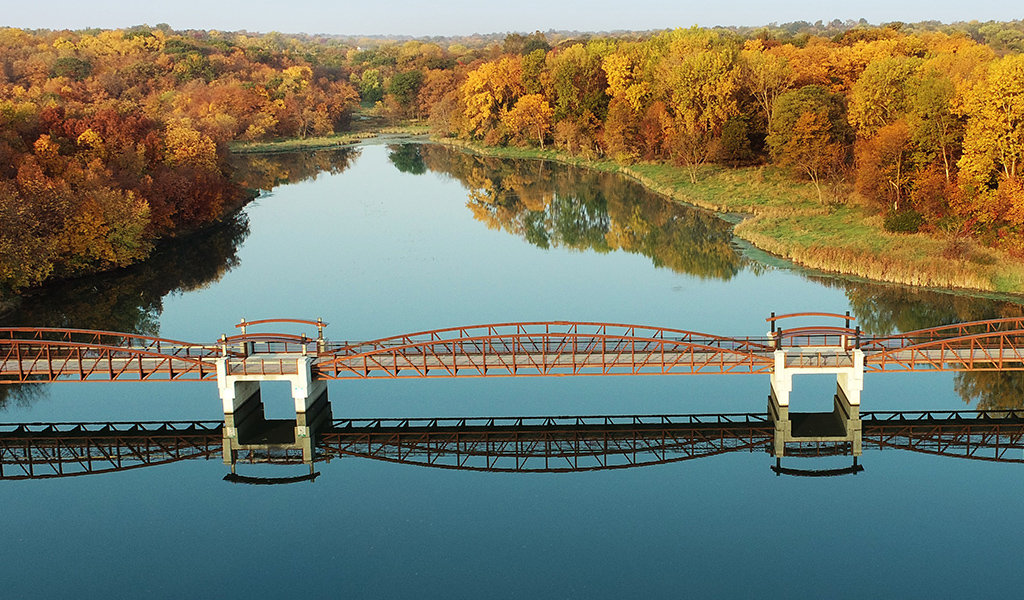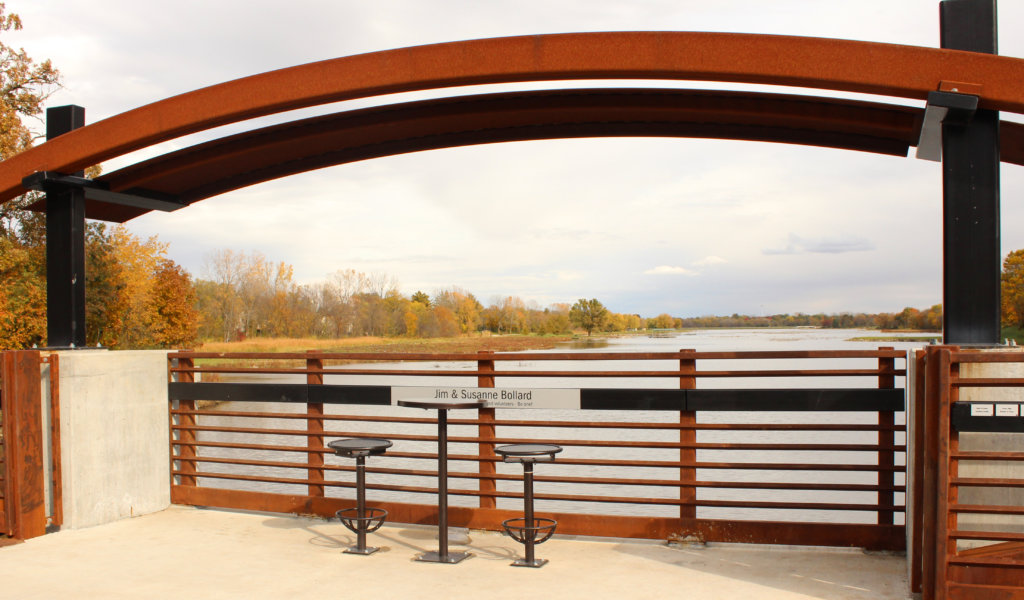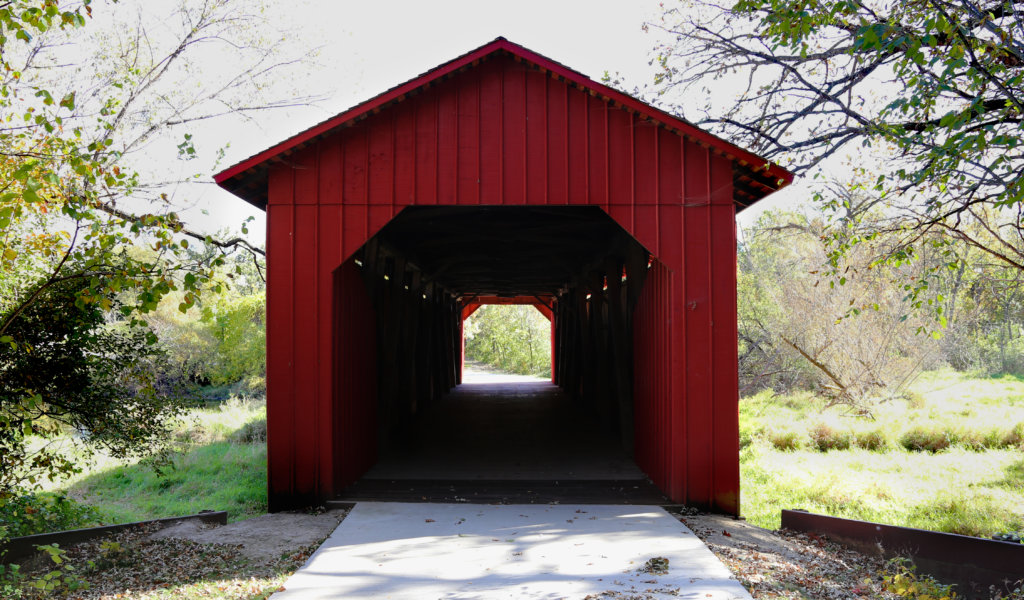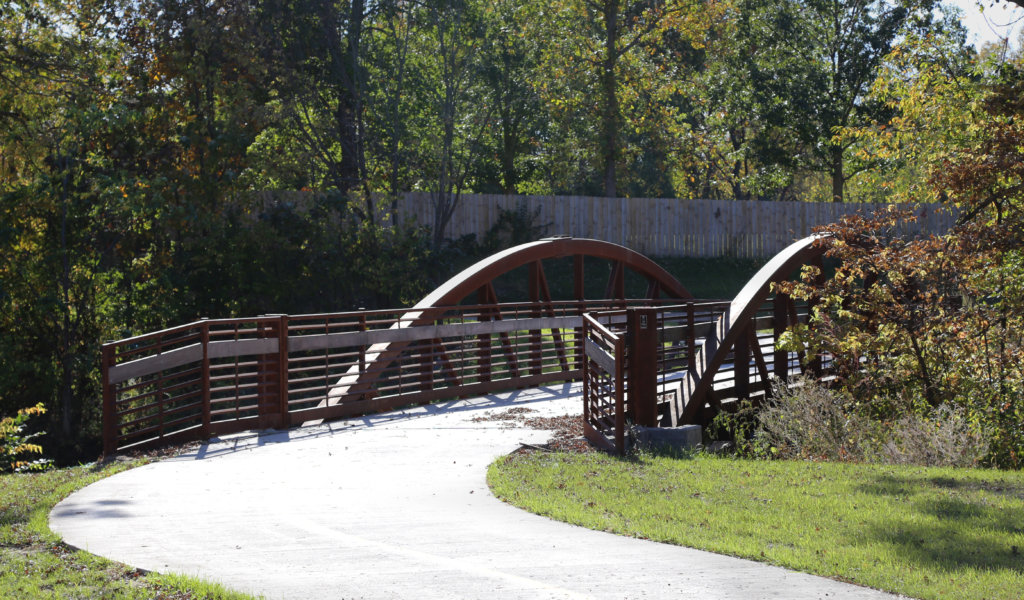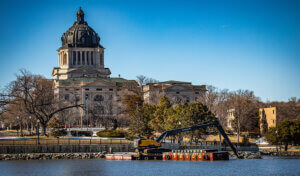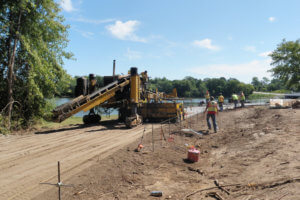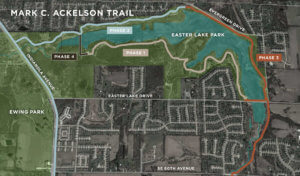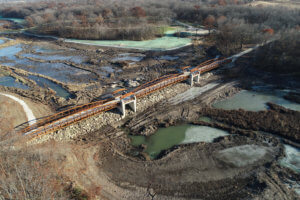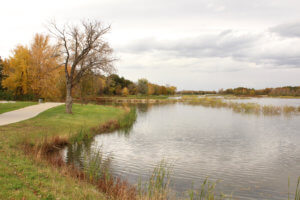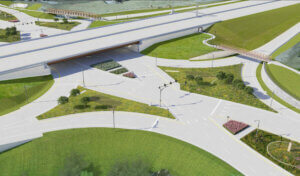
Expanding Recreational Opportunities Through Trail Connections
In 2012, numerous stakeholders came together to develop the Easter Lake Water Quality Management Plan in response to severe water quality problems in the lake. This comprehensive plan would serve as the baseline for design work performed by Snyder & Associates. This work included a new spillway and fish-rearing pond improvements, the creation of lake drainage and hydraulic dredging plan, and extensive stormwater wetland improvements, just to name a few.
A separate but coordinated component of the Easter Lake restoration plan was the creation of a trail project to encompass the lake and connect with other area attractions. Named in honor of the former Iowa Natural Heritage Foundation (INHF) president Mark C. Ackelson, the trail project was also designed by the Snyder & Associates team. The trail culminated from Polk County Conservation’s desire to improve safe access to Easter Lake Park and expand recreational facilities. The result is a 4.1-mile trail loop encompassing the entire lake. A signature bridge located at the west end of the trail serves as an impressive focal point with overlooks at each pier. Sidewalk connections to surrounding neighborhoods provide ease of access for residents and visitors alike.
To further expand the recreational facilities, a multi-use trail connection was made between Easter Lake Park and Ewing Park located to the west. By tying the parks together, users have access to over 1,000 contiguous acres of park and recreational facilities to enjoy. From Ewing Park, other trails connect to the north and south along Indianola Avenue.
Fundraising Assistance & Phased Construction Prompts Straightforward Development
The loop trail and connecting segments required a concerted fundraising effort. Our team provided construction cost opinions, developed promotional materials, and rendered an image of the signature bridge to assist Polk County Conservation in generating excitement and project funding. Polk County voters opted to support the Polk County Water and Land Legacy Bond (PCWLL), which provided significant project funding. With the Snyder & Associates team’s assistance, Polk County Conservation was also able to leverage the bond funds to secure federal funding assistance through the Transportation Alternatives Program (TAP).
The detailed trail design and construction process was split into four distinct phases:
- Phase One (2013) — trail construction through the historic, covered bridge and along the south side of the lake
- Phase Two (2015) — starting in Ewing Park, another 36miles of the trail was constructed, passing through a tunnel under Indianola Avenue, then proceeding east along the north side of Easter Lake beyond the eastern park entrance
- Phase Three (2018) — closed the eastern gap between phases 1 and 2 and paved two additional parking lots. Modifications to Easter Lake Dam were required to incorporate the trail along the dam
- Phase Four (2018) — a short trail segment and a 443-foot-long, three-span bridge completed the 1-mile trail loop. This phase also included the construction of a sediment forebay weir
Phases three and four were constructed in coordination with the watershed restoration & water quality improvements project which involved dredging, shoreline restoration, and a constructed wetland. The lake was drained for dry dredging, which enabled the trail construction process to utilize lake bottom soils for borrow material, staging of construction materials, and modification to the dam while dry. The dry lakebed also facilitated the construction of the weir for the sediment forebay on the west side of the lake and the signature bridge.
The weir is made from a row of recycled concrete placed across the lake bottom directly under the bridge. It’s submerged below the surface and not visible to passing boaters. However, placing the weir under the bridge allows the bridge to serve as the visual cue to boaters that there’s an obstacle below. The weir is low enough to allow people kayaking and canoeing to glide over the top to access Yeader Creek.
Phase three also included repaving Evergreen Avenue and connecting sidewalks for the City of Des Moines as a separate division in the construction documents. Joint bidding and construction of the trail and the roadwork resulted in construction cost savings for both the city and Polk County Conservation.
Additionally, the Evergreen Avenue Bridge was replaced by a separate construction contract. We coordinated with the City of Des Moines to include a trail with the new bridge that crosses over the lake outlet. The simultaneous construction of the road, bridge, and trail minimized negative impacts to the area by overlapping construction activities and road closures.
Trail Design & Related Construction Services
Snyder & Associates provided the conceptual, preliminary, and final design for over five miles of a 12-foot-wide PCC recreational trail. We also provided construction observation and administration, including the management of required federal funding documentation. Shuck-Britson, a subsidiary of Snyder & Associates, provided structural engineering and construction phase services for the four pedestrian bridges along the alignment, varying in length from 32- to 443-feet.
Our team coordinated extensively with the Iowa Department of Transportation (DOT), the Iowa Department of Natural Resources (DNR), and the U.S. Army Corps of Engineers (USACE) for environmental clearance, permitting, and trail construction throughout the park. Wetland impacts were minimized through adjustments to the trail alignment when possible. Potential bat habitats were also identified, and recommendations were given for trees to be cut during the winter months, so that bats would not be present.
Increased usage of Easter Lake Park is anticipated to continue in the future. The completion of the Mark C. Ackelson Trail, together with the Easter Lake Spine Trail, provides a major steppingstone in connecting the area to the larger regional trail network.
